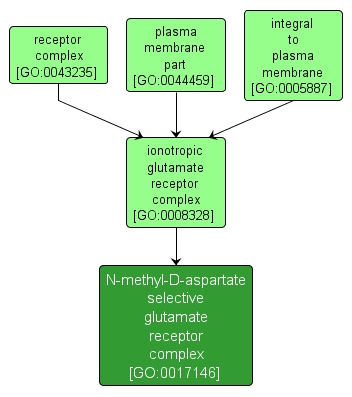| Desc: |
An assembly of four or five subunits which form a structure with an extracellular N-terminus and a large loop that together form the ligand binding domain. The C-terminus is intracellular. The ionotropic glutamate receptor complex itself acts as a ligand gated ion channel; on binding glutamate, charged ions pass through a channel in the center of the receptor complex. NMDA receptors are composed of assemblies of NR1 subunits (Figure 3) and NR2 subunits, which can be one of four separate gene products (NR2A-D). Expression of both subunits are required to form functional channels. The glutamate binding domain is formed at the junction of NR1 and NR2 subunits. NMDA receptors are permeable to calcium ions as well as being permeable to other ions. Thus NMDA receptor activation leads to a calcium influx into the post-synaptic cells, a signal thought to be crucial for the induction of NMDA-receptor dependent LTP and LTD. |














